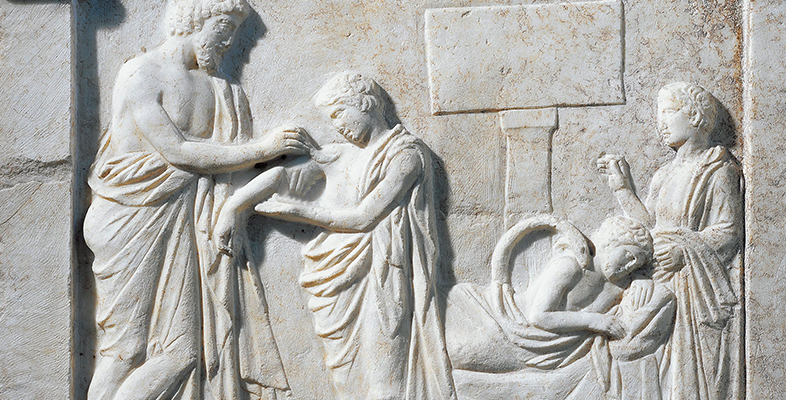4.4 Competing traditions: Athens and Oropos
The Athenians’ connection to the Great Amphiaraia in the late fourth century BCE, then, makes the festival an ideal place to look for clues about the politicising dimensions of Amphiaraos’ cult practice. In the following activity, you will learn more about the chariot dismount competition at Athens and Oropos and think about how iconographical evidence relating to it may provide insight into its political importance.
Activity 9
Part 1
Watch the following video in which Open University academic Christine Plastow discusses the Panathenaia festival.
Once you have watched the video once, watch it again, this time with the following questions in mind:
- Where and when was the Panathenaia held?
- Which god or goddess did it honour?
- What activities took place there?
Discussion
The Panathenaia was the Athenians’ most important religious festival. It was held in the summertime at Athens in honour of the city’s patron goddess, Athena. The festival went on for several days and consisted of lots of competitions in athletics, music, poetry and even chariot racing. The highlight of the festival was the procession to the Acropolis, where a new robe was dedicated to a statue of Athena. On the Acropolis participants would have seen the Parthenon, which in turn was decorated with sculpted scenes of both the religious procession and the dedication of Athena’s robe.
Part 2
Read the following extract taken from Wilding (2021, pp. 89–91 (excerpted)).
As you read, make some notes on the following questions:
- At which festivals was the chariot dismount competition (agon apobasis) celebrated?
- What relationship did the event have with the festivals at which it was celebrated?
- Where did the victors of the chariot dismount competition come from at these festivals?
The … quadrennial festival for Amphiaraos [i.e. the Great Amphiaraia, which occurred every four years] included a procession, gymnastic and equestrian events, and a competition in chariot dismounts; we also know from the sole surviving victor list from these games that the Great Amphiaraia consisted of musical competitions as well … Overall, the programme of the festival was modelled closely on the Panathenaia…
The Great Amphiaraia’s inclusion of an agon apobasis, likely one of its closing events, also enabled the Athenians to revitalise an image of themselves through Amphiaraos’ worship. This event resonated both with stories told about Amphiaraos’ mythological demise … and with the Athenians’ celebration of this agon [i.e. ‘contest’] at the Panathenaia as an exclusively Athenian event. As Julia Shear shows, it reaffirmed the Athenians’ closeness with its purported divine inventors, Athena and her offspring Erichthonios, and formed part of the broader commemoration of the Panathenaia of Athena’s victory over the Giants …
Unfortunately, the sole victor list for the celebration of the Great Amphiaraia under the Athenians [in 329/8 BCE] is worn at the bottom … but in all likelihood it once preserved a record of this competition [the chariot dismount] and the name of its esteemed Athenian victor.
Discussion
- The chariot dismount competition was celebrated at the Great Amphiaraia and the Panathenaia.
- The celebration of the chariot dismount competition appears to have been closely linked to mythological stories relating to both Amphiaraos and Athena: it resonated with the descent of Amphiaraos into the earth alongside his chariot and with the mythological victory of Athena over the Giants.
- At the Panathenaia, the event was open only to Athenians. The author of this passage says that the victor the Great Amphiaraia of 329/8 BCE is likely to have been Athenian as well.
